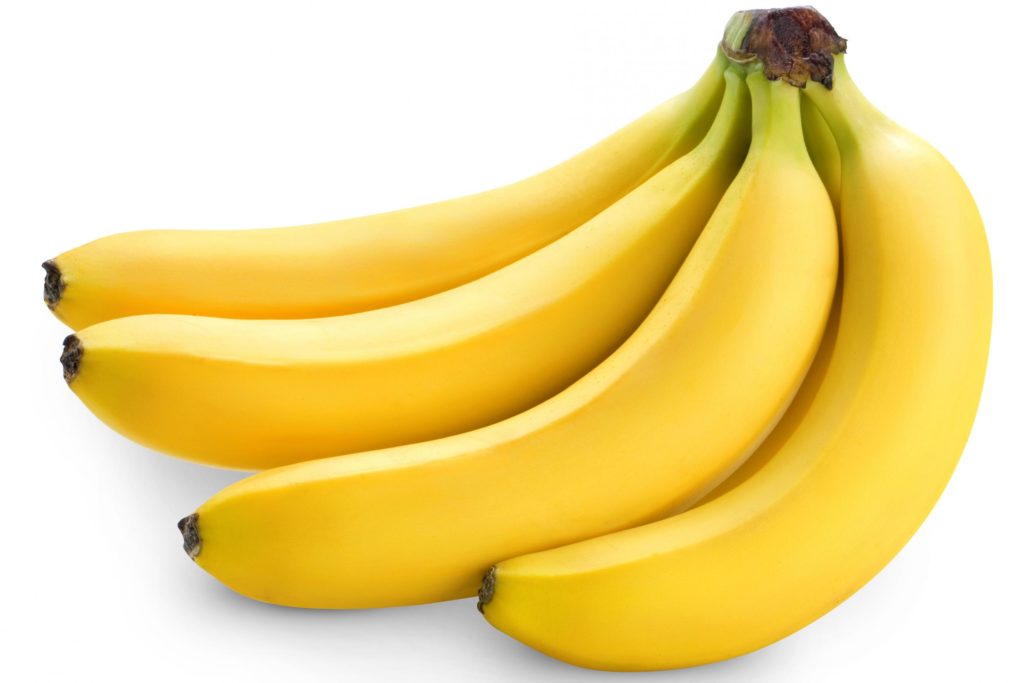Bananas have at the Fitness-Fans a bad name. While high in fructose, this tropical fruit offers some extremely positive health benefits.
Bananas are the most common fruit bought in supermarkets, but their bad reputation is a lot more sugary carbohydrates Delivering keeps them off the shopping lists of many fitness enthusiasts.
You will be surprised to find under that yellow peel there is a fruit with nutrient content that promotes a healthier body inside and out. And who doesn't love the power of a banana, the muscle building Protein shake gives a sweet, thickening note?
Bananas before and after training
If it ever there was a time to eat a banana, it would after a serious one Be training. When bananas ripen, their starch turns into simple sugars transformed, making the pulp sweeter and stickier. A single one medium-sized banana contains about 14 grams of naturally occurring sugar. The may sound bad, but you can use it to your advantage when you are in regeneration mode.
After training These quickly digestible natural sugars help reduce the consumed Replenish glycogen, a form of storage of carbohydrates that Your main source of energy during intense exercise is. The sugar stimulates also releasing insulin to drive amino acids into your tired muscles.

Clinging to a ripe banana before a workout can provide a boost of energy to aid you on your final rep. And don't forget that ripe bananas are a more "natural" way to tame a sweet tooth compared to packaged foods that are full of added sugars. This makes ripe bananas a great addition to desserts, post-exercise smoothies, or a bowl oatmeal.
Bananas are more than just potassium
When people think of bananas, they often think of "Kalium" - And that's good. Potassium regulates the function of muscles and nerves and supports the blood circulation in the body.
But wait, there is more!
Bananas also contain vitamin C, manganese, and vitamin B6. In fact, bananas are one of the few fruits that provide useful amounts of vitamin B6, an important vitamin that is involved in several enzyme reactions in the body. B6 can also support brain function and healthy neurotransmitter levels.
Green bananas
While most people eat ripe bananas, there is a lot to be said to find a place in your diet for greener, less ripe ones. Unlike ripe bananas, the carbohydrate in green bananas isn't sugar, it's starch - and not just any starch. Resistente Stärke is a unique type of carbohydrate that resists processing in our small intestine, the place where most foods are digested.
Choose Green Bananas for Resistant Starch !!!
Instead, our body digests this starch in our large intestine, where the starch acts as a "prebiotic". In the colon, these starches serve as a fuel source for bacteria, which release beneficial compounds such as short chain fatty acids and fatty acids which improve the health of our intestinal microbes. This low glycemic form of carbohydrates can help maintain healthy blood sugar levels and reduce feelings of hunger.
In addition, some research suggests that adding resistant starch to meals can increase post-meal fat burning. And because resistant starch isn't digested properly, it doesn't add any calories in foods that contain them.
Note: If your current diet is low in resistant starch, then suddenly avoiding green bananas in your protein shakes. You want to gradually increase your intake to reduce uncomfortable digestive problems.
References:
Binia, A., Jaeger, J., Hu, Y., Singh, A. & Zimmermann, D. (2015). Tägliche Potassium Intake and Sodium-Potassium Ratio in Lowering Blood Pressure: One Meta-analysis of randomized controlled trials. Journal of Hypertension, 33 (8), 1509 & ndash; 1520.
D. Moorthy, I. Peter, TM Scott, LD Parnell, CQ Lai, JW Crott & KL Tucker (2012). Der Status of vitamins B-12 and B-6, but not vitamins folate, homocysteine and methylene tetrahydrofolate reductase C677T polymorphism, is with a Cognition Impairment and Depression Associated in Adults - 3. The Journal of Nutrition, 142 (8), 1554-1560.
DF Birt, T. Boylston, S. Hendrich, JL Jane, J. Hollis, L. Li & K. Schalinske (2013). Resistant Starch: Promises to Improve Human Health. Advances in Nutrition, 4 (6), 587-601.
Also, PW, Yu, WS, Kuo, YT, Wasserfall, C., Goldstone, AP, Bell, JD & Frost, G. (2007). Influence of resistant starch on the body fat pattern and the central one Appetitregulation . PLoS One, 2 (12), e1309.
Dear CL, Ward, E., Holst, JJ, Astrup, A., Ormsbee, MJ, Connelly, S. & Arciero, PJ (2015). Resistant starch and protein intake promotes fat oxidation and the feeling of fullness in slim and overweight / obese women. Nutrition Journal, 14 (1), 113.
